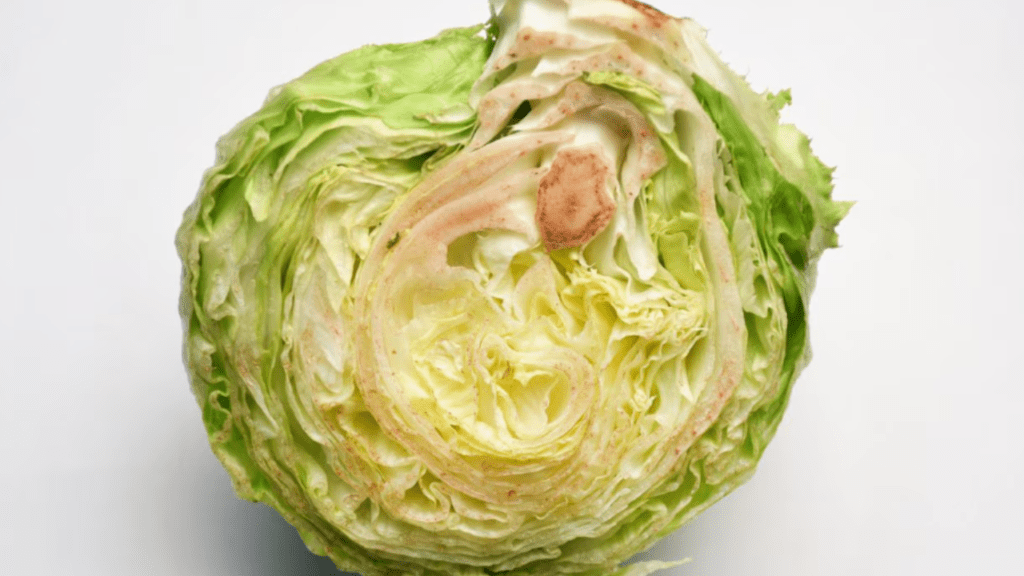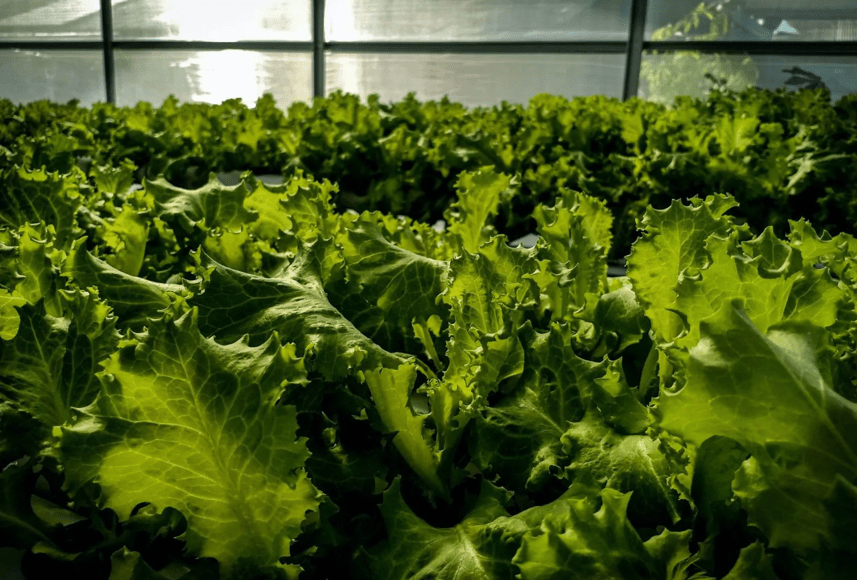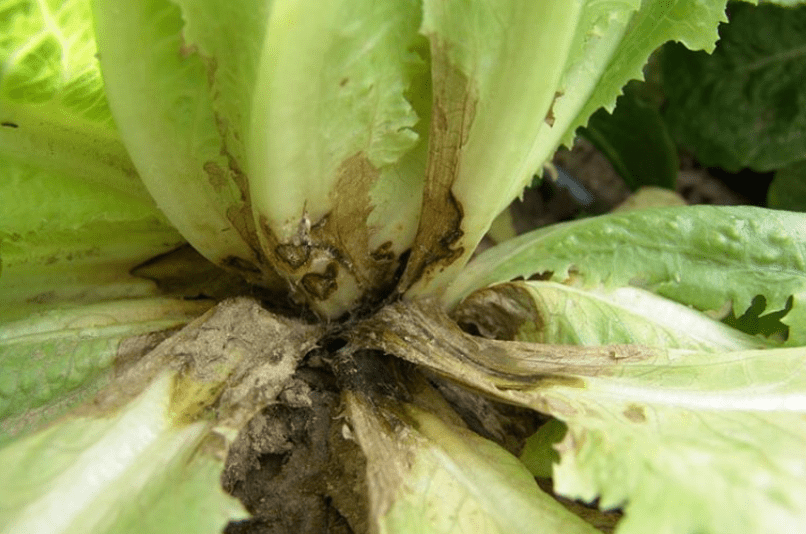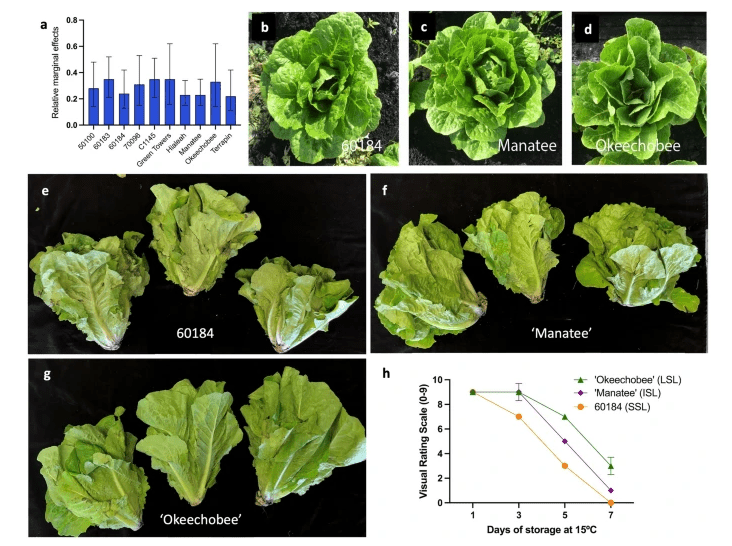
Understanding Why Your Lettuce Turns Pink: Causes and Remedies
Lettuce turning pink can be a frustrating issue for many gardeners and home cooks. Understanding the causes behind this discoloration and knowing how to prevent and remedy it can help keep your lettuce fresh and appealing. In this article, we’ll delve into the science behind pink lettuce and provide practical solutions to ensure that your lettuce stays green and crisp. Whether you’re a seasoned gardener or a beginner, these tips will help you maintain the quality of your lettuce harvest.
Table of Contents
ToggleUnderstanding Lettuce Turning Pink
What Causes Lettuce to Turn Pink?
Explain the various factors that can lead to pink discoloration in lettuce leaves.
Lettuce turning pink can be caused by a variety of factors, including exposure to high temperatures, over-matured leaves, and oxidation. High temperatures can cause the lettuce to produce anthocyanin, a pigment that can give the leaves a pink or red hue. Over-matured leaves can also develop this pigment as the chlorophyll breaks down and the anthocyanin becomes more prominent. Additionally, oxidation from bruising or cutting the lettuce can also lead to pink discoloration. To prevent this from happening, it’s important to store lettuce in a cool environment and use it while it’s still fresh. Avoiding rough handling and cutting lettuce right before use can also help prevent oxidation and pink discoloration. By understanding these factors and taking preventative measures, you can help keep your lettuce green and appealing.
Discuss the role of environmental conditions, plant genetics, and diseases in causing pink hues.
Environmental conditions, plant genetics, and diseases can all play a role in causing pink hues in lettuce. High temperatures can trigger the production of anthocyanin, a pigment that can give the leaves a pink or red hue. Over-matured leaves can also develop this pigment as the chlorophyll breaks down and the anthocyanin becomes more prominent. Additionally, oxidation from bruising or cutting the lettuce can lead to pink discoloration. Plant genetics can also contribute to the presence of anthocyanin, as certain lettuce varieties may be more prone to developing pink hues. Diseases such as downy mildew can also cause pink discoloration in lettuce leaves. To prevent this from happening, it’s important to store lettuce in a cool environment and use it while it’s still fresh. Avoiding rough handling and cutting lettuce right before use can also help prevent oxidation and pink discoloration. By understanding these factors and taking preventative measures, you can help keep your lettuce green and appealing.
Types of Lettuce Affected
Pink discoloration in lettuce leaves can affect various types of lettuce, including romaine, butterhead, and leaf lettuce. Over-matured leaves can also develop this pigment as the chlorophyll breaks down and the anthocyanin becomes more prominent. Additionally, oxidation from bruising or cutting the lettuce can lead to pink discoloration. Plant genetics can also contribute to the presence of anthocyanin, as certain lettuce varieties may be more prone to developing pink hues. Diseases such as downy mildew can also cause pink discoloration in lettuce leaves. To prevent this from happening, it’s important to store lettuce in a cool environment and use it while it’s still fresh. Avoiding rough handling and cutting lettuce right before use can also help prevent oxidation and pink discoloration. By understanding these factors and taking preventative measures, you can help keep your lettuce green and appealing.
Environmental Factors
Sunlight and Temperature
Over-matured leaves can also develop this pigment as the chlorophyll breaks down and the anthocyanin becomes more prominent. Additionally, oxidation from bruising or cutting the lettuce can lead to pink discoloration. Plant genetics can also contribute to the presence of anthocyanin, as certain lettuce varieties may be more prone to developing pink hues. Diseases such as downy mildew can also cause pink discoloration in lettuce leaves. To prevent this from happening, it’s important to store lettuce in a cool environment and use it while it’s still fresh. Avoiding rough handling and cutting lettuce right before use can also help prevent oxidation and pink discoloration. By understanding these factors and taking preventative measures, you can help keep your lettuce green and appealing.

Soil pH and Nutrient Levels
Are important factors that can affect the color and health of lettuce leaves. The pH level of the soil can impact the availability of nutrients to the plant, which in turn affects the color and quality of the lettuce. It’s important to test the pH level of the soil and make any necessary adjustments to ensure that it is suitable for growing healthy lettuce. Additionally, the nutrient levels in the soil, such as nitrogen, phosphorus, and potassium, play a crucial role in the overall health and color of the lettuce leaves. It’s important to provide the right balance of nutrients to the soil to promote healthy growth and vibrant green color in the lettuce. By understanding and monitoring these environmental factors, you can ensure that your lettuce plants are receiving the optimal conditions for producing healthy and visually appealing leaves.
Common Diseases and Pests
Fungal Diseases
Can be a significant threat to the health and quality of lettuce plants. Fungal diseases such as downy mildew and powdery mildew can cause discoloration, wilting, and overall deterioration of the lettuce leaves. It’s important to keep an eye out for any signs of fungal diseases and take appropriate measures to prevent and control them. Practice good sanitation by removing any infected plants or leaves, and avoid overhead watering to prevent the spread of fungal spores. Additionally, using fungicides and implementing crop rotation can help protect your lettuce plants from fungal diseases. By understanding the potential threats posed by fungal diseases and taking proactive measures to prevent them, you can help maintain the health and vibrancy of your lettuce plants.

Bacterial Infections
Can also pose a threat to the health of lettuce plants. Bacterial diseases such as bacterial leaf spot and bacterial soft rot can cause discoloration, wilting, and decay of the lettuce leaves. It is important to practice good sanitation by removing any infected plants or leaves and to avoid overhead watering to prevent the spread of bacteria. Implementing proper crop rotation and using disease-resistant lettuce varieties can also help protect your plants from bacterial infections. By understanding the potential threats posed by bacterial diseases and taking proactive measures to prevent them, you can help ensure the health and quality of your lettuce plants. Keeping a close eye on environmental factors and practicing good sanitation and prevention techniques can go a long way in maintaining the health and vibrancy of your lettuce plants.
Pest Infestations
Can pose a significant threat to the health of your lettuce plants. Common pests such as aphids, slugs, and caterpillars can feed on the leaves, causing damage and reducing the overall yield of your crop. It’s important to regularly inspect your lettuce plants for signs of pest infestations and take proactive measures to control them. This can include using natural predators, like ladybugs, or organic pest control methods to prevent damage to your plants. Additionally, implementing good sanitation practices, such as removing any damaged or infested leaves, can help prevent the spread of pests. By understanding the potential threats posed by pest infestations and taking proactive measures to prevent them, you can help maintain the health and vibrancy of your lettuce plants. It’s important to stay vigilant and take action to protect your plants from pests in order to ensure a successful harvest.
Genetics and Varietal Traits
Genetic Factors
Explore how genetic traits in certain lettuce varieties predispose them to turning pink.
Lettuce varieties may turn pink due to genetic traits. Some lettuce varieties have a genetic predisposition to turning pink under certain conditions. This can be influenced by factors such as temperature, light exposure, and soil composition. It’s important to choose lettuce varieties that are well-suited to your specific growing conditions and climate to minimize the risk of pink discoloration. Additionally, providing optimal growing conditions, including proper watering and nutrient levels, can help reduce the likelihood of pink discoloration in lettuce. It’s also important to monitor the health of your plants and take proactive measures to address any signs of stress or nutrient deficiencies that could contribute to pink discoloration. By understanding the genetic traits and environmental factors that can impact lettuce coloration, you can take steps to minimize the risk of pink discoloration and ensure a healthy, vibrant crop.

Highlight heirloom varieties or hybrids known for unique pigmentation characteristics.
Lettuce varieties can turn pink due to genetic traits. Some lettuce varieties have a genetic predisposition to turning pink under certain conditions. Factors such as temperature, light exposure, and soil composition can influence the coloration of lettuce. It’s important to choose lettuce varieties that are well-suited to your specific growing conditions and climate to minimize the risk of pink discoloration. Providing optimal growing conditions, including proper watering and nutrient levels, can help reduce the likelihood of pink discoloration in lettuce. Monitoring the health of your plants and taking proactive measures to address any signs of stress or nutrient deficiencies can also help prevent pink discoloration. By understanding the genetic traits and environmental factors that can impact lettuce coloration, you can take steps to minimize the risk of pink discoloration and ensure a healthy, vibrant crop. Consider highlighting heirloom varieties or hybrids known for their unique pigmentation characteristics to add visual interest to your garden or farm.
Prevention and Management Strategies
Cultural Practices
Cultural practices can have a significant impact on the coloration of lettuce. Some lettuce varieties have a genetic predisposition to turning pink under certain conditions. Factors such as temperature, light exposure, and soil composition can influence the coloration of lettuce. It’s important to choose lettuce varieties that are well-suited to your specific growing conditions and climate to minimize the risk of pink discoloration. Providing optimal growing conditions, including proper watering and nutrient levels, can help reduce the likelihood of pink discoloration in lettuce. Monitoring the health of your plants and taking proactive measures to address any signs of stress or nutrient deficiencies can also help prevent pink discoloration. By understanding the genetic traits and environmental factors that can impact lettuce coloration, you can take steps to minimize the risk of pink discoloration and ensure a healthy, vibrant crop. Consider highlighting heirloom varieties or hybrids known for their unique pigmentation characteristics to add visual interest to your garden or farm.
Environmental Controls
play a significant role in the coloration of lettuce. Factors such as temperature, light exposure, and soil composition can influence the coloration of lettuce, causing some varieties to turn pink. It’s important to choose lettuce varieties that are well-suited to your specific growing conditions and climate to minimize the risk of pink discoloration. Providing optimal growing conditions, including proper watering and nutrient levels, can help reduce the likelihood of pink discoloration in lettuce. Monitoring the health of your plants and taking proactive measures to address any signs of stress or nutrient deficiencies can also help prevent pink discoloration. By understanding the genetic traits and environmental factors that can impact lettuce coloration, you can take steps to minimize the risk of pink discoloration and ensure a healthy, vibrant crop. Consider highlighting heirloom varieties or hybrids known for their unique pigmentation characteristics to add visual interest to your garden or farm.
Biological Controls
Are a natural and environmentally friendly way to manage pests and diseases in your garden or farm. One method of biological control is introducing natural predators or parasites that feed on the pests, helping to reduce their population. For example, introducing ladybugs to your garden can help control aphids, which can damage your plants. Another method is using microbial pesticides, which contain beneficial microorganisms that can suppress the growth of harmful pathogens without harming the plants. Additionally, using cover crops and crop rotation can help improve soil health and reduce the risk of pest and disease infestations. By implementing biological controls, you can effectively manage pests and diseases while minimizing the use of chemical pesticides, creating a healthier and more sustainable growing environment.
Case Studies and Practical Tips
Real-Life Examples
Share case studies or anecdotes of growers who have successfully managed lettuce discoloration.
Lettuce discoloration can be effectively managed by understanding the genetic traits and environmental factors that impact it. By choosing heirloom varieties or hybrids known for their unique pigmentation characteristics, growers can add visual interest to their crops while minimizing the risk of pink discoloration. Additionally, implementing biological controls, such as introducing natural predators or parasites and using microbial pesticides, can help manage pests and diseases in a natural and environmentally friendly way. Cover crops and crop rotation can also improve soil health and reduce the risk of infestations. Sharing case studies or anecdotes of successful growers can provide practical tips for managing lettuce discoloration and creating a healthier and more sustainable growing environment.
Include before-and-after photos or testimonials to illustrate effective strategies.
Biological controls can effectively manage pests and diseases while minimizing the use of chemical pesticides, creating a healthier and more sustainable growing environment. For example, lettuce discoloration can be effectively managed by understanding the genetic traits and environmental factors that impact it. By choosing heirloom varieties or hybrids known for their unique pigmentation characteristics, growers can add visual interest to their crops while minimizing the risk of pink discoloration. Additionally, implementing biological controls, such as introducing natural predators or parasites and using microbial pesticides, can help manage pests and diseases in a natural and environmentally friendly way. Cover crops and crop rotation can also improve soil health and reduce the risk of infestations. Sharing case studies or anecdotes of successful growers can provide practical tips for managing lettuce discoloration and creating a healthier and more sustainable growing environment. Including before-and-after photos or testimonials can illustrate the effectiveness of these strategies and inspire others to implement them in their own growing practices.
In conclusion, pink lettuce is usually caused by a bacterial infection called Pseudomonas. This can occur when the lettuce is exposed to warm, moist conditions for too long. To prevent this, make sure to store your lettuce in a cool, dry place and use it within a few days of purchase. If your lettuce does turn pink, you can try rinsing it in cold water and storing it in the refrigerator to slow down the bacterial growth. Additionally, consider purchasing lettuce from a reputable source and inspecting it for any signs of discoloration before purchase.
Frequently asked questions And Answer
Lettuce turns pink due to a chemical reaction between the iron in the lettuce and certain bacteria. This reaction causes the lettuce to turn a pink or red color.
In most cases, pink lettuce is safe to eat. However, it is important to carefully inspect the lettuce for any signs of spoilage or unusual odors before consuming it.
To prevent lettuce from turning pink, it is important to properly store it in the refrigerator and ensure that it is not exposed to excessive moisture. Additionally, using a vinegar rinse before storing the lettuce can help inhibit bacterial growth.
If the pink lettuce appears to be in good condition and does not have any signs of spoilage, it can still be used in salads. However, it is important to thoroughly wash and inspect the lettuce before consuming it.
In general, pink lettuce does not pose significant health risks. However, it is important to exercise caution and use your judgment when deciding whether or not to consume pink lettuce.
